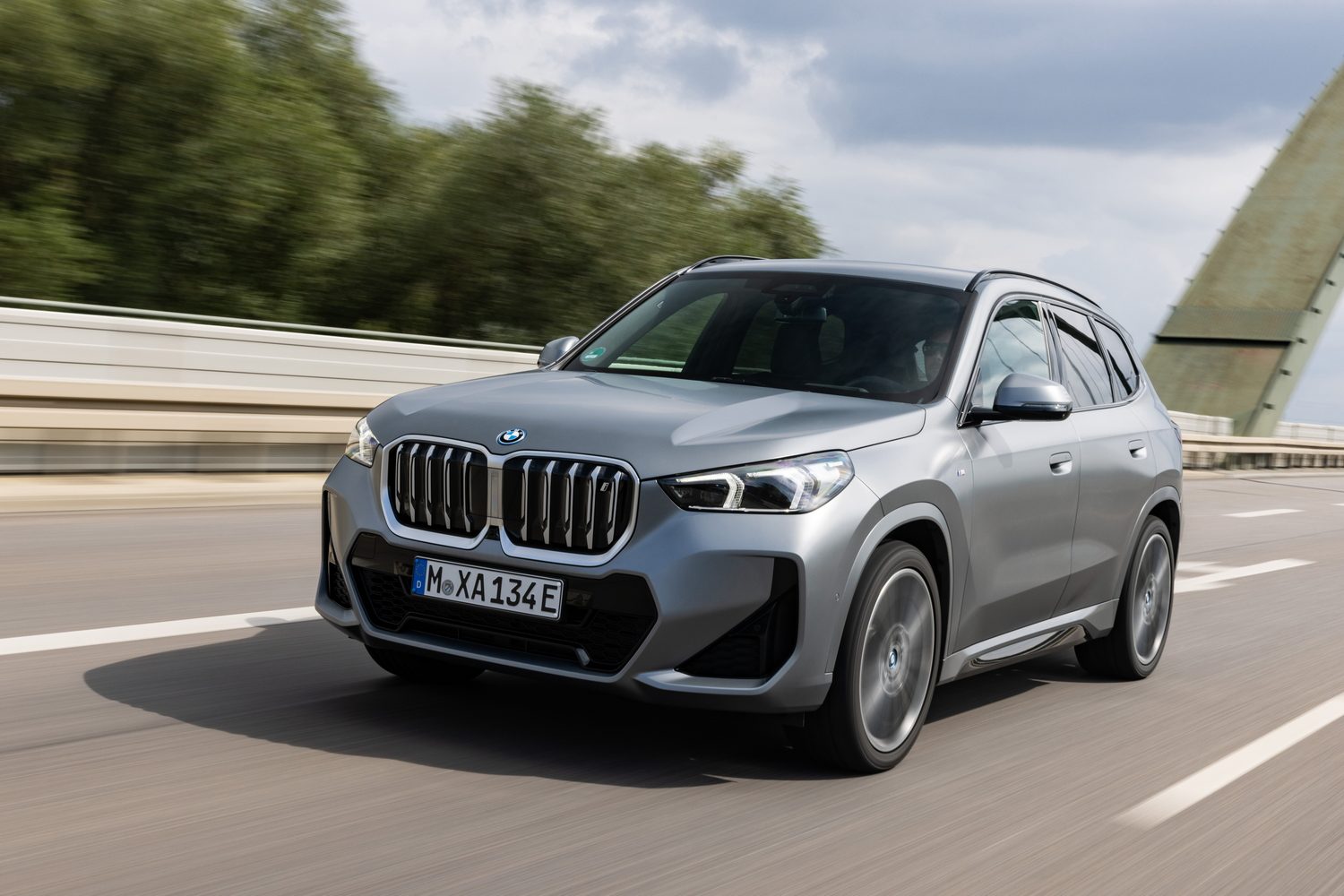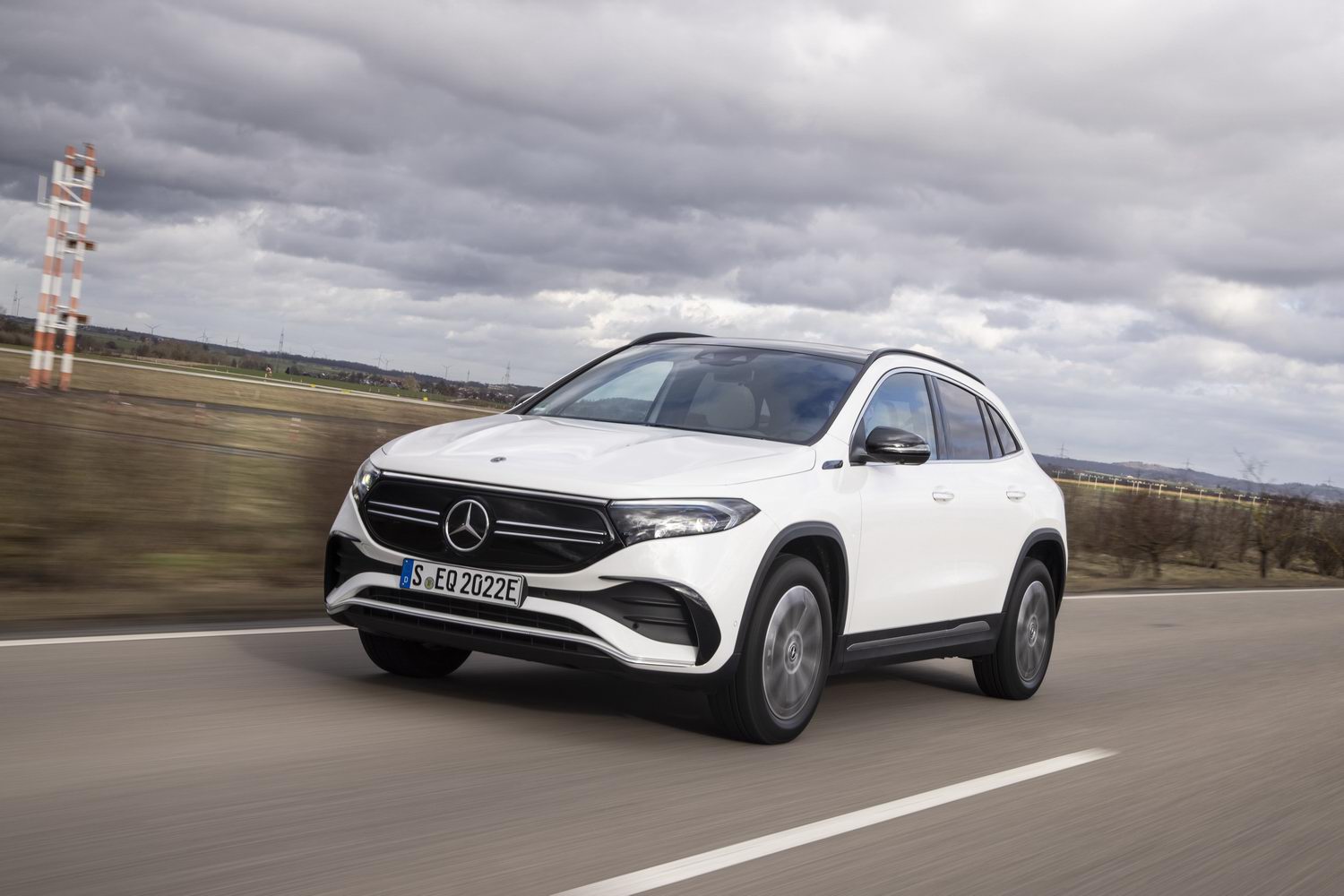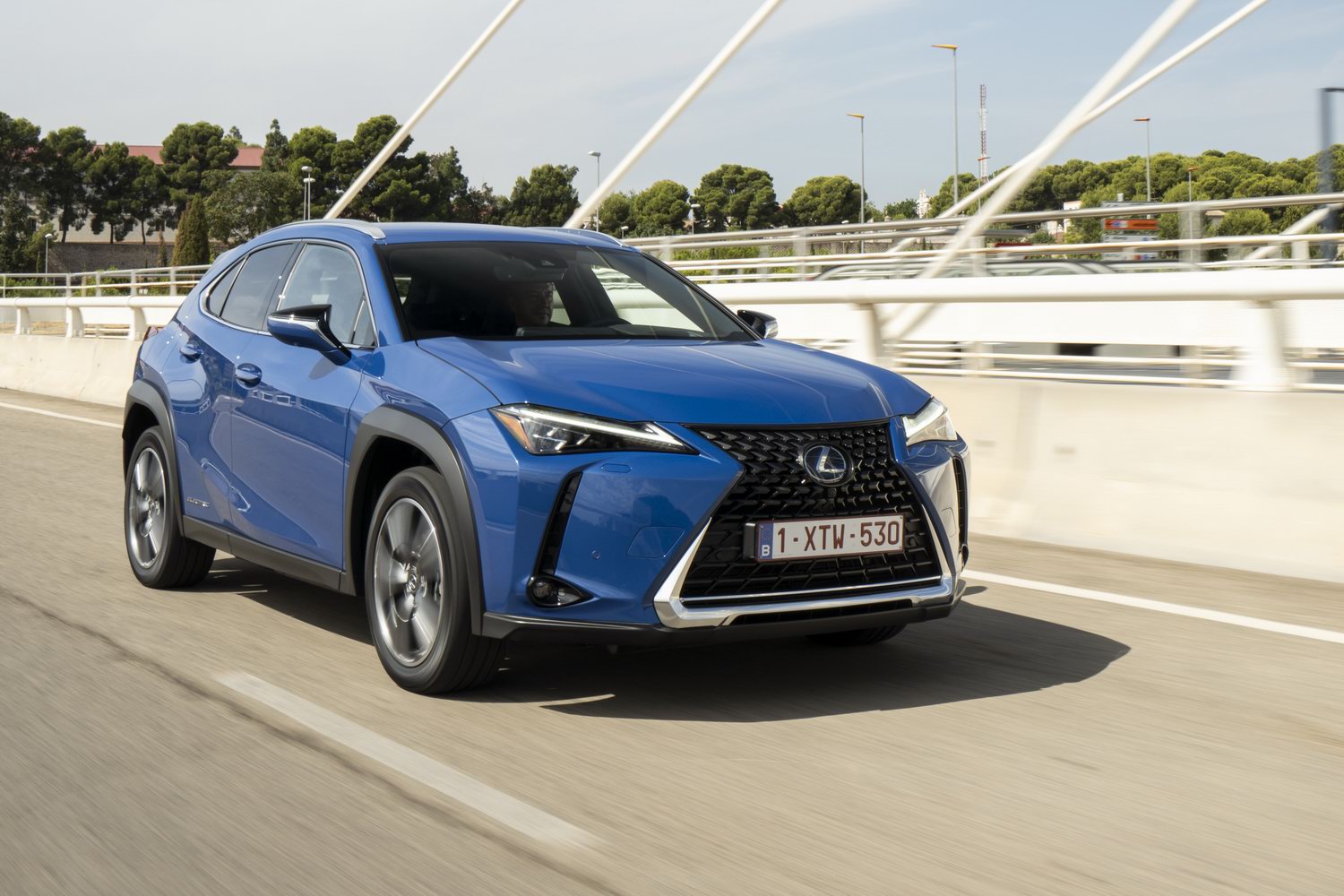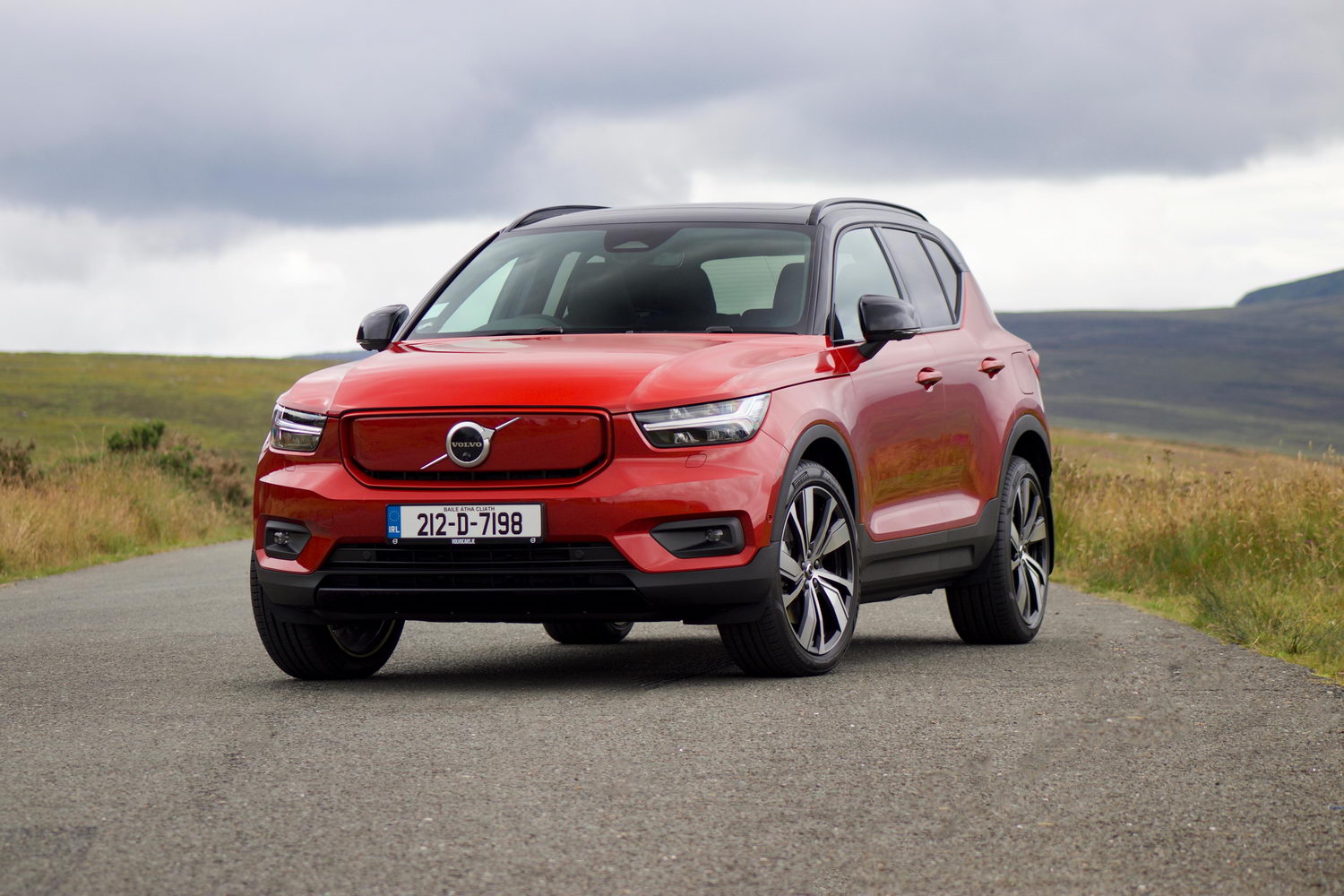BMW's march towards an electric future is gathering pace. Not so long ago, the i3 was its sole offering, but now the brilliance of the iX3, iX and i4 models has given the brand a foothold in the market. Next year it will be time for something smaller, in the shape of BMW's new iX1. Based on the equally-new X1 SUV and available solely with an all-wheel-drive electric powertrain, the newcomer is here to take the fight to the Mercedes-Benz EQA and the Lexus UX 300e, among others.
In the metal
The iX1 has followed the design language of the new BMW X1, with only subtle tweaks differentiating the battery-electric SUV from its petrol- and diesel-powered siblings. You get the same chunky body shape and many of the same details, including the lights and skid plates, but the iX1 comes with blue exterior trim in more basic forms, as well as a slightly different 'active' grille with shutters that open and close - allowing the on-board computer to sacrifice a little more drag in exchange for some extra cooling.
Whether the styling appeals will be a question of personal preference, but we think it's one of the more handsome SUV designs to come from BMW in the past few years. You'd never call it pretty, but the X1 seems to have matured and modernised since its introduction more than a decade ago. We would avoid the blue trim, though, as that looks like it's trying a little too hard to show off the car's eco credentials.
Inside, the iX1 is only discernible from its internal combustion-powered siblings when you start it up. The dashboard design, with its massive central cubby hole and curved bank of screens across the driver's side of the cabin, is taken straight from the 2 Series Active Tourer, right down to the floating centre console with its toggle-style gear selector.
Only when you switch the car on will you see that the digital instruments have changed slightly, giving the driver a more electric car-centric display with graphics for battery level and electricity consumption. That said, the general theme is still much the same, with a sharp display that's easy to navigate and configure.
The touchscreen infotainment system isn't quite as brilliant, despite being cut from the same cloth. The graphics are very sharp, the screen responds quickly to any inputs and the menus are fairly logical, but that's only half the story. The new screen has also taken on some extra responsibility in the shape of the climate control system, which is accessed via a kind of taskbar at the bottom of the screen. Although the bar is always accessible and shifting the temperature is the work of just a few taps, it isn't quite as intuitive as the physical controls found in the old X1, and the system compels you to take your eyes off the road for longer while you're using it.
What's more, unlike the iX SUV and indeed the new 3 Series, the iX1 doesn't feature the iDrive rotary controller, which would make the screen easier to operate on the move. In the new 3 Series, drivers who have learned their way around the system can access most features more or less by touch - something that won't be possible in the new X1.
All that said, the system is still better than most in this class - it's just that it could be even better with more of a hybrid approach to switchgear and touch-sensitive features.
But while the advisability of BMW's latest touchscreen is up for debate, there's no doubting the quality of the iX1's cabin. The materials are all great, and they have been screwed together with all the fastidiousness we expect from a German premium brand. Everything from the button for the driving modes to the window switches feels well engineered and built to last.
Equally unquestionable is the amount of space on offer in the iX1. BMW claims to have grown the car's cabin in every dimension, so you get more rear space than before, as well as more boot space. All of which means you can easily seat four adults and know they won't complain over the length of the journey, while their baggage will easily fit in the boot, too. At 490 litres, the boot is about 50 litres smaller than that of the basic petrol-powered X1, but it's still almost as large as that of a 3 Series Touring, and provides significantly more capacity than a Mercedes-Benz EQA.
Driving it
At launch, BMW is only offering one all-electric powertrain, which it calls xDrive30 - although this is not to be confused with the 30e xDrive powertrain, which is a plug-in hybrid. Anyway, the xDrive30 system combines two electric motors - there's one on each axle - to provide a significant 313hp and 494Nm of torque, which gives it quite a punch. It also means the iX1 is all-wheel drive, although the rear motor only kicks in when it's needed to ensure maximum efficiency.
As a result, the iX1 can squeeze between 414- and 440km from a single charge of its 64.7kWh battery according to the official WLTP economy test. Our test drive, which covered a variety of roads, suggested most drivers might get within a kilowatt-hour or so of the official 18.4kWh/100km efficiency figure, so a range of around 350km should be easily achievable. And if you use the efficiency coach system that advises you how much of the accelerator to use depending on traffic and speed limits, you might be able to extend that further still.
That, of course, depends on drivers resisting the urge to utilise all that performance, which is sufficient for a 0-100km/h time of less than six seconds. And as with all electric cars, the fact a lot of torque is instantly available from low speed means the car feels even faster than the numbers suggest it will. Particularly if you pull the paddle behind the steering wheel marked 'Boost', as that provides an extra 41hp for a few seconds.
As is so often the way with BMW products, the straight-line speed is not as impressive - nor as important - as the cornering capability. BMW has positioned the battery low in the car to keep the weight as low as possible, which means the iX1 doesn't lean much in corners. You can feel the weight shifting around on the springs, but that never translates into body roll. And with plenty of grip and precise steering, it gives you the confidence to throw it around a bit. That means, despite its height, the iX1 is as good to drive as most family hatchbacks - and better than some. It's certainly the most interesting car in its class from behind the steering wheel.
Despite the handling, the iX1 rides reasonably well, too. As with most electric cars, the weight of the battery means it can slump into potholes that lighter cars would soak up more easily, but the suspension is supple enough to blunt most of the sharp edges.
What you get for your money
BMW Ireland has confirmed that the starting price for the iX1 will be €63,995. For that kind of money, BMW will sell you the basic Sport version, which comes with alloy wheels, two-zone climate control and a reversing camera as standard, as well as a power-operated tailgate and, of course, the two massive digital screens. More upmarket versions will only add to that equipment list.
Summary
The BMW iX1 faces strong competition, but it acquits itself very well. Yes, the basic Mercedes EQA may have a longer range, but more comparable EQA 350 4Matic versions are only on a par with the iX1 - a car that's superior in every other regard that matters. The BMW is more enjoyable to drive, it has a more solid interior and a much bigger boot. For our money, it's the new leader in the compact premium electric SUV market.















































